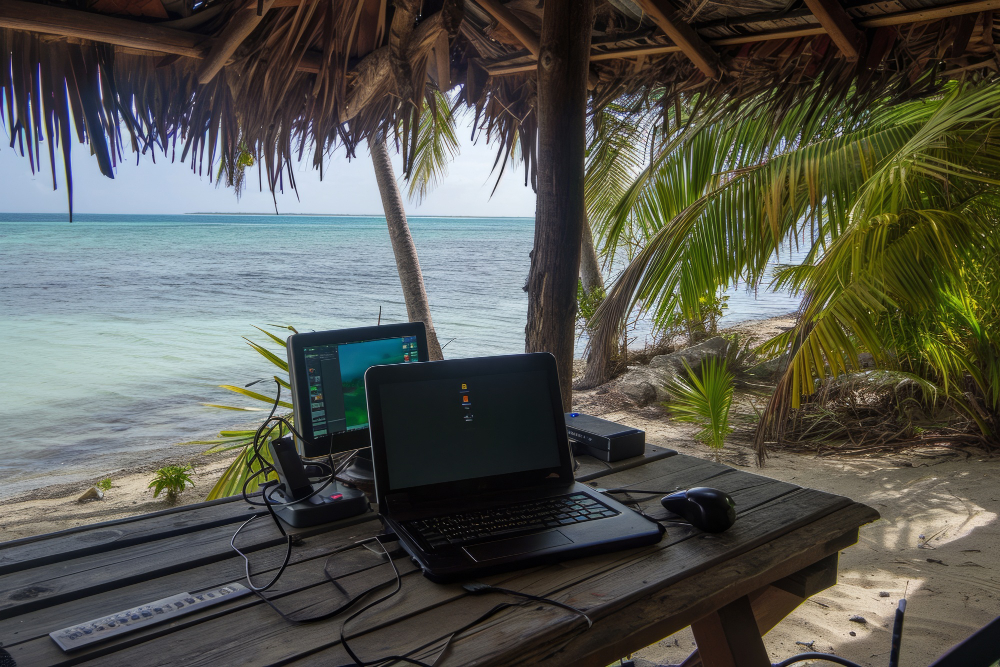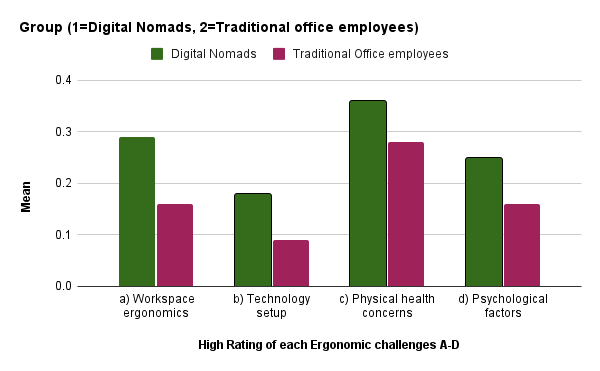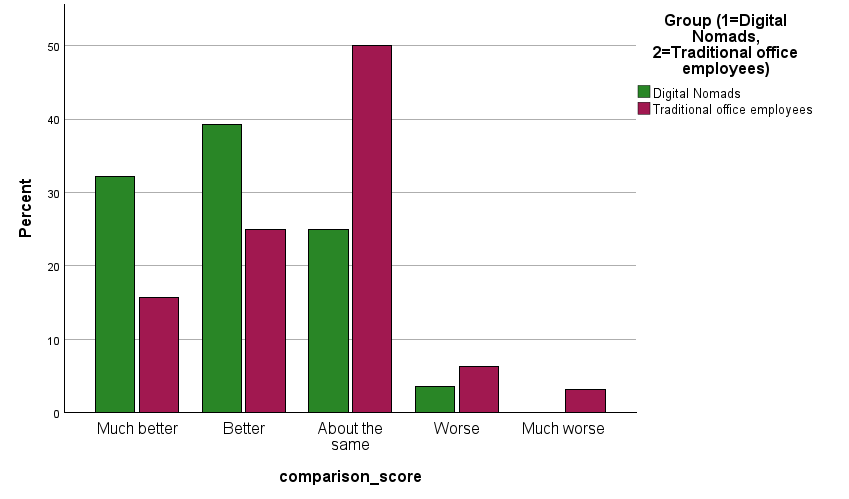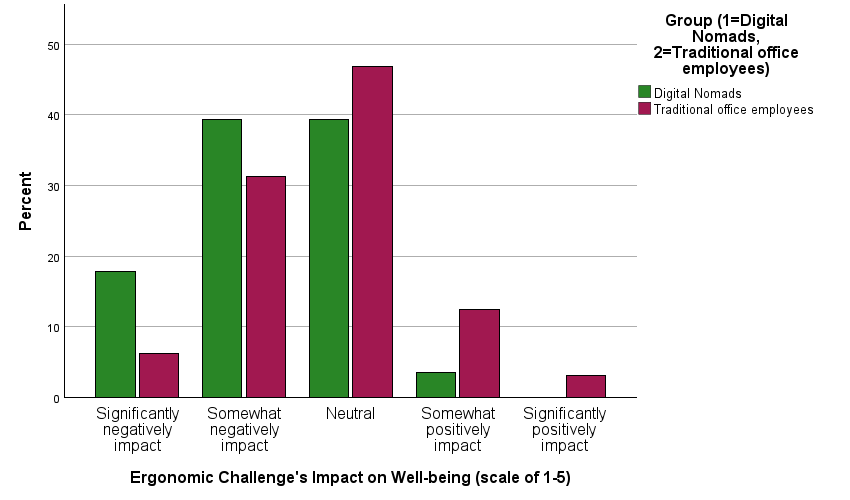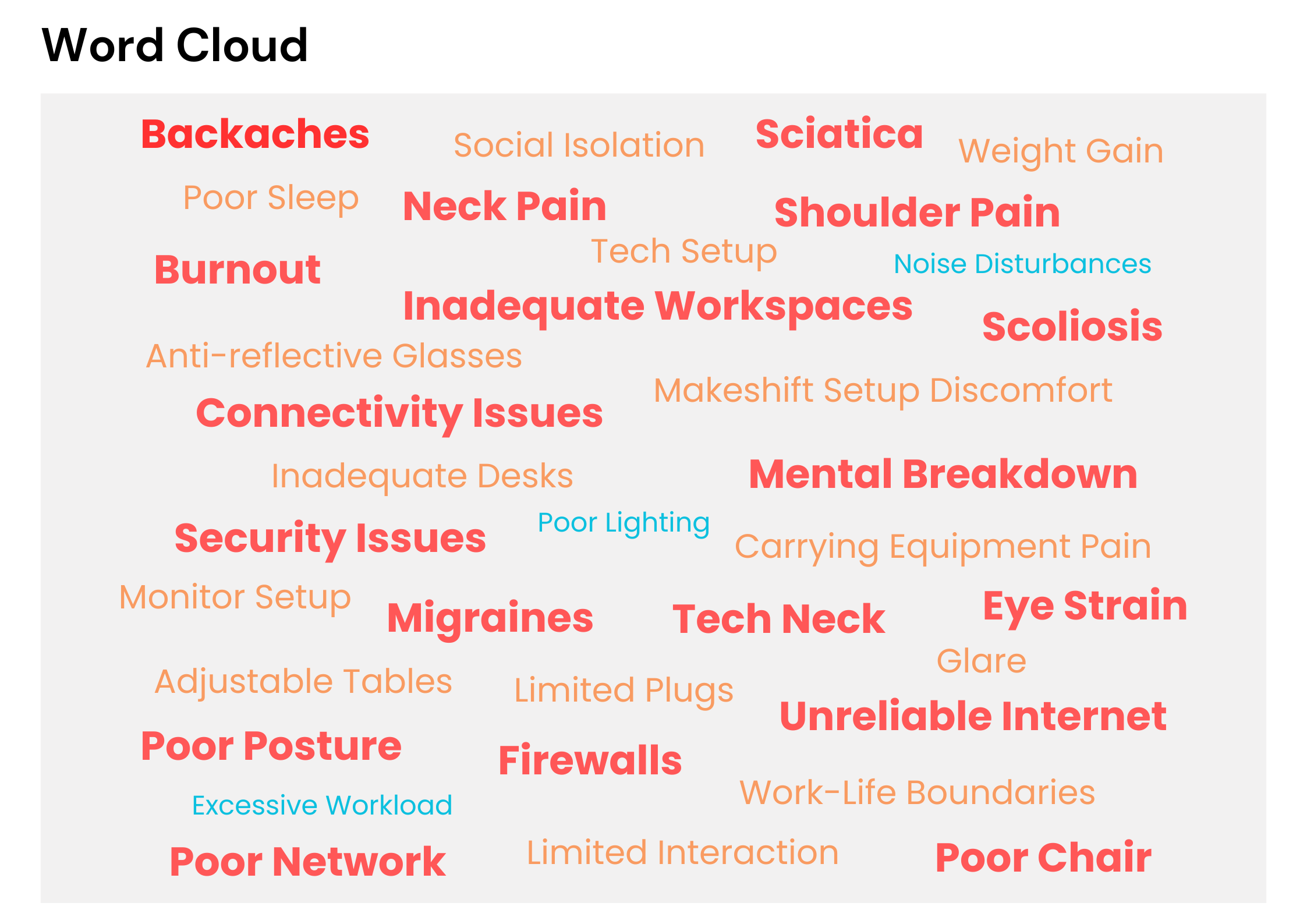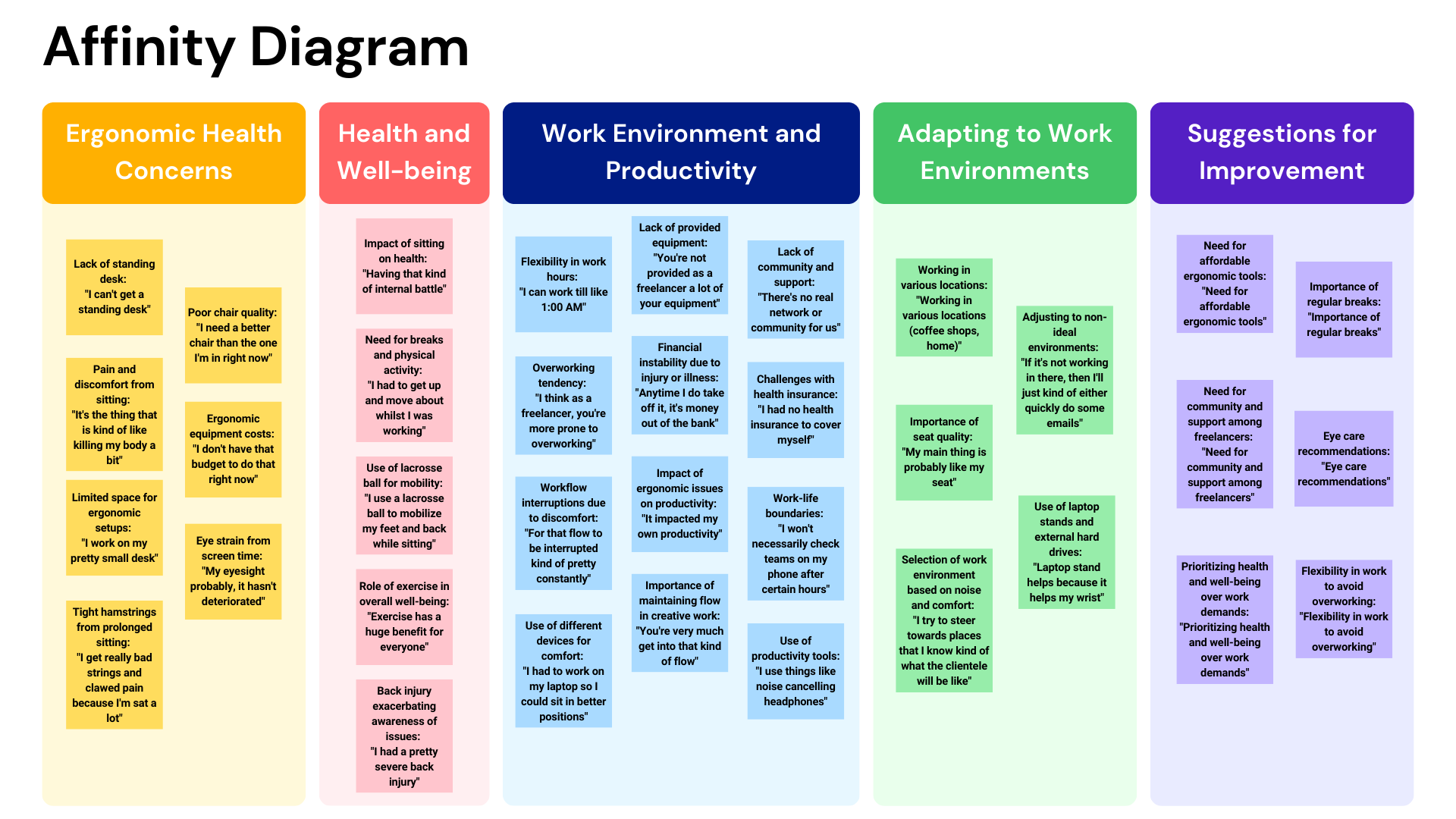The findings show that Digital nomads are especially susceptible to ergonomic challenges due to the changing and uncertain nature of their work settings. They frequently encounter varying ergonomic conditions, which can result in bad posture, more strain on muscles and bones which is known as musculoskeletal disorders, and mental tiredness. This is due to the lack of systematic interventions and support in their environments, unlike traditional office workers who benefit from controlled workspaces and consistent ergonomic furniture.
Regular breaks are the most common strategy used by both digital nomads and office employees. This approach is widely adopted by both groups to mitigate ergonomic challenges, underscoring its universal importance for maintaining physical well-being during work.
Job satisfaction is reported to differ notably between digital nomads and traditional office employees in the primary data. Digital nomads enjoy their work more because they can choose when and where they work, which gives them a sense of freedom and variety. On the other hand, opinions vary among traditional office workers. Some appreciate the structure, stability, and ergonomic benefits of office settings, while others think working remotely might be just as good or even better in terms of satisfaction. This shows that even though digital nomads are generally more satisfied, many people who are used to office jobs still like them because of the predictable environment and comfortable setups.
In general, based on this study both ways of working have their own benefits and difficulties, and neither is seen as much better or worse for people’s well-being and productivity.
The alignment between the findings of primary data and the literature is evident in the recognition of ergonomic challenges as a significant concern for digital nomads. Both primary data and literature emphasised how poor posture and inadequate workstations affect physical health, productivity and psychological well-being, emphasising the necessity for ergonomic support that addresses both physical and mental health.
The study is recognized for its distinctive contribution in pinpointing the unique ergonomic challenges faced by digital nomads and differentiates them from those of traditional office employees. The results led to the creation of ergonomic guidelines and tools designed for digital nomads, helping to prevent problems in unusual work settings and making their jobs better. Essentially, this study addresses a missing piece in current research and sets the stage for more studies to improve the comfort and health of this growing workforce.


